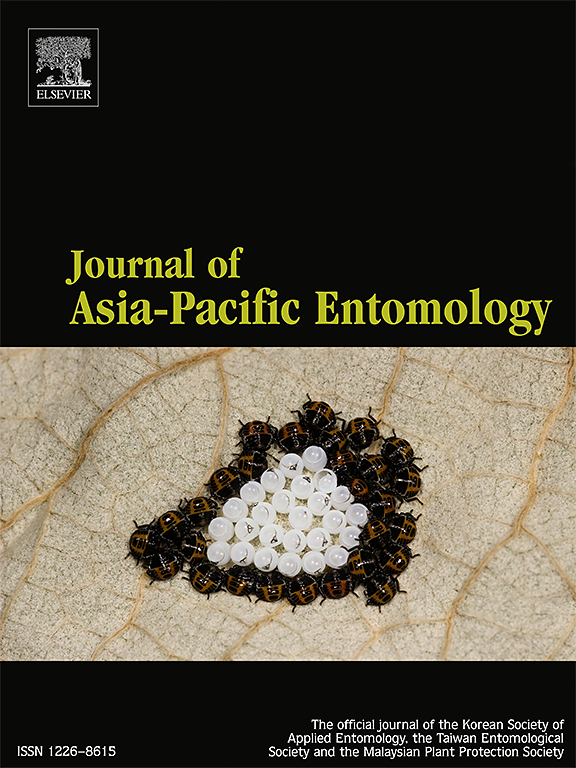Selection of suitable stain in Trichogramma pretiosum (Hymenoptera: Trichogrammatidae) for the control of biological management of Chrysodeixis includens (Lepidoptera: Noctuidae)
IF 1.1
3区 农林科学
Q3 ENTOMOLOGY
引用次数: 0
Abstract
Selection of suitable Trichogramma strain is critical in biological control programs against pests. Thus, the objective was to select the most suitable strains based on the biological and molecular analyses of five populations of T. pretiosum to develop the program of biological control of C. includens in brassica cultivation. A randomized complete block design was used, with five strains (FT, VI, VII, SBI and SBII) and 20 replicates. Endosymbionts present in the strains were identified by polymerase chain reaction. “FT” showed better longevity, a higher number of adults per egg, and a higher sex ratio compared to the other strains. It was the most indicated for the biological control of C. includens in brassicas despite failing to obtain the highest egg parasitism. Cluster analysis showed that the “FT” strain met a majority of the requirements for managing C. includens and flying pests. Among the evaluated endosymbionts, Cardinium, Carsonella, Spiroplasm, and Serratia were observed in three of the five evaluated strains, and a combination of Cardinium, Spiroplasma, and Serratia may be involved in the parasitism of the “FT” strain.

膜翅目:赤眼蜂科(赤眼蜂科)生物防治染料的选择
选择合适的赤眼蜂菌株是生物防治的关键。因此,本研究的目的是通过对5个居群的生物学和分子生物学分析,选择最适宜的菌株,制定芸苔栽培中包皮蚜的生物防治方案。采用随机完全区组设计,共5株菌株(FT、VI、VII、SBI和SBII), 20个重复。采用聚合酶链反应鉴定菌株中存在内生共生体。与其他品系相比,“FT”表现出更长的寿命、更高的每卵成虫数和更高的性别比。结果表明,该方法对芸苔属植物的卵寄生率虽未达到最高,但具有较好的生物防治效果。聚类分析结果表明,“FT”品系能够满足处理大蠊和飞虫的大部分要求。在评估的5个菌株中,有3个菌株中观察到Cardinium、Carsonella、spirroplasma和Serratia,并且“FT”菌株的寄生可能涉及到Cardinium、spirroplasma和Serratia的组合。
本文章由计算机程序翻译,如有差异,请以英文原文为准。
求助全文
约1分钟内获得全文
求助全文
来源期刊

Journal of Asia-pacific Entomology
Agricultural and Biological Sciences-Insect Science
CiteScore
2.70
自引率
6.70%
发文量
152
审稿时长
69 days
期刊介绍:
The journal publishes original research papers, review articles and short communications in the basic and applied area concerning insects, mites or other arthropods and nematodes of economic importance in agriculture, forestry, industry, human and animal health, and natural resource and environment management, and is the official journal of the Korean Society of Applied Entomology and the Taiwan Entomological Society.
 求助内容:
求助内容: 应助结果提醒方式:
应助结果提醒方式:


